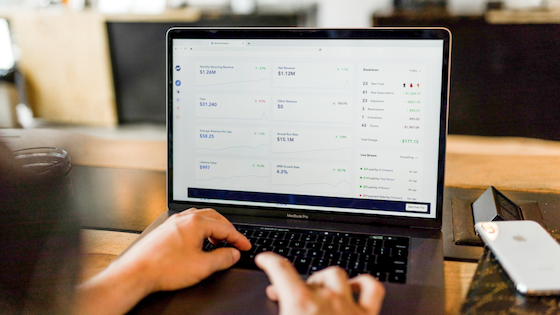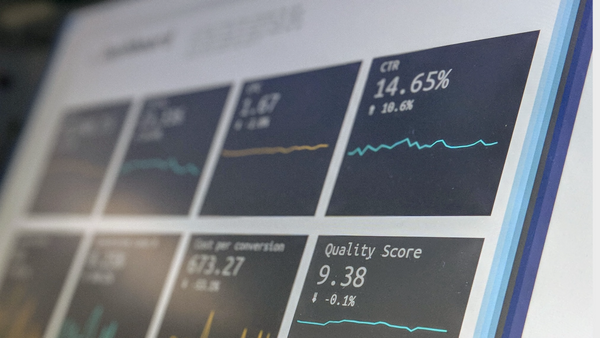The entire world has been impacted by the recent COVID-19 outbreak. Responses to the pandemic have resulted in travel bans, curfews, and self-imposed quarantines. This is affecting our economy in a major way and, for Amazon sellers, it has completely disrupted how our business works. Coronavirus impacts Amazon sellers in a variety of ways.
Recently, JungleScout conducted a survey to get a more deeper understanding on how much this is affecting their users. This is what they found:
36% sellers seeing declining sales
11% sellers raising prices on products
50% sellers looking to source products outside of China
The survey also disclosed that almost half of the sellers who have yet to see a decrease in sales expect it to happen eventually. 13% of the surveyed sellers don’t expect the current situation will affect their sales, and a small minority (8%) have experienced a increase in sales.
On March 17th, Amazon put out a notice that, for the foreseeable future, it can only create shipping plans for products in the following categories:
(a) Baby
(b) Health & Household
(c) Beauty & Personal Care (including personal care appliances)
(d) Grocery
(e) Industrial & Scientific
(f) Pet Supplies
Amazon will still receive any incoming shipments that are sent in according to shipping plans prior to March 17th. Amazon will also continue to fulfill orders for items that are in the “non-essential” categories, but the shipments will not be reliable. Apart from the rapid and sudden changes in consumer behavior, this new protocol is yet another obstacle for Amazon sellers.

The Effect on China
70% of Amazon sellers import their products from China. Although many factory workers have been under quarantine for most of February, many factories outside of the Hubei province have since reopened. Still, this doesn’t mean that your orders will be fulfilled and shipped in a timely manner.
Either way, all Amazon sellers have found themselves in uncharted waters. The global economy is more intertwined than ever, and we don’t have any proper reference on what we can expect or what we should be doing. But there are two main areas that we do need to consider for the time being:
- 1. Fulfilling Orders
- 2. Adapting to Consumer Behavior
Fulfilling Orders and Managing Inventory
Assuming you are not selling what Amazon deems “essential,” you are not going to replenish your inventory in weeks. But, this doesn’t mean that you can’t continue to sell after your stock runs out, it simply means you cannot use FBA.
If you find a way to fulfill orders without relying on Amazon, you’re back in business! Here’s what you can do:
- Fulfill the orders yourself – In the early days of Amazon, this was the only option. Many sellers of the past simply had their inventory shipped to their homes. And whenever they would get an order, they would manually print labels, slap them on the box, and bring them to the local post office. This was until FBA became an option in 2006. Nowadays, many sellers still run their business like this—mostly doing retail arbitrage. If you have storage room, and the right products, this could be a viable option for you.
- Use another fulfillment service – Amazon multi channel fulfillment is a service that isn’t FBA, but helps you move forward as usual. Deliverr and Flowspace in the US have an integration system that works with Amazon, or Huboo and Cubyn in the EU. Services like this are already used by regular FBA sellers to diversify and avoid increased storage fees in Q4. This might be an adjustment, but it is not much of an adjustment to be made, and it’s only temporary.Another issue when it comes to this transition, is that you can’t afford to have any downtime. Refresh yourself on The Ins and Outs of Inventory Management. All of the same rules still apply, even in these extraordinary circumstances.
Switching from FBA to FBM (Fulfilled by Merchant) is rather straightforward. From the seller’s perspective, just navigate to “Manage Inventory,” click “Change to Fulfilled by Merchant,” and your listing will update after a few steps.

Be weary. You shouldn’t do this while you still have inventory from FBA orders, and if you don’t think ahead, you can end up with stranded inventory. What you can do is copy your FBA listing and convert it to FBM—this will help you get two sources for the same listing and allows you to seamlessly transition from FBA inventory to FBM inventory without losing ranking or going out of stock.
During times like this, careful planning and decisive execution can be the difference between going out of business, surviving, and—quite possibly—thriving.
Converting from FBA to FBM
Keep in constant contact with your supplier – You need to be in the know if any changes are being made in the production process. You can probably count on your supplier to let you know how long your shipments will actually take. Your supplier may have a freight forwarder they keep in contact with as well. Remember that your supplier is always a source of invaluable information. Make sure you take advantage of it.
Monitor your inventory levels on a daily basis – These are uncertain times. People tend to make impulsive purchases, and it’s difficult to predict how consumers are going to behave. This is precisely why you should try your best to anticipate how long your inventory will last and make sure you don’t go out of stock. If you’re prepared, you can take advantage in responding better to buyers while your competitors are facing issues, resulting in higher ranking! Don’t be afraid to send small express shipments, if necessary, to keep up.
Monitor your margins and costs – If you start using a new service to fulfill orders, you need to know the exact cost of fulfilling each product. You need to understand the difference between FBA fees and any new fees you are paying for FBM. If necessary, you may need to adjust your price or be more conservative with your PPC. The main point is that you cannot afford to be unaware of your cost structure and your expected profits.

Adapting to the new consumer behavior
What you should be focused on right now, as a seller, is doing your best to utilize all of the information readily available to you and adjust on the fly. Seller Central provides plenty of information you can extract from your business and advertising reports. What we are dealing with is a day-to-day situation , and you are likely to experience fluctuations in your sales volume. The key is to find a way to organize your efforts so you’re ready for any and all changes—bans to be extended or “essential” categories to be lifted.
If you have a wide catalogue of products, it’s important for you to separate those that are “taking a hit” and those that are maintaining or increasing in sales volume. You can use Pay Per Click advertising as a tool for organization.
Here’s how you can structure your PPC so that you can minimize damage or possibly identify new opportunities for growth within these new circumstances:
Your current structure might become obsolete – If you are diligent with your day-to-day PPC efforts, you probably have a structure that consists of campaigns with highly relevant targets, along with experimental and exploratory campaigns. You might have campaigns that are geared aggressively and performing under an unfavorable ACOS in order to get high, organic rankings.
Right now, you can’t rely on any experimental or expensive campaigns. Therefore, you should focus on keeping your campaigns that are working constantly and temporarily pause the rest.
This doesn’t mean that you should refrain from any aggressive marketing strategies. It just means that the strategies you may have in place for normal circumstances aren’t going to be guaranteed now. A good rule of thumb to use is to keep any campaign with a favourable ACOS in the last 30 days (before the state of emergency was declared), as well as the week following. This will be your new baseline.
Use Portfolios – It’s crucial that you have a clear understanding of the performance of various products or product lines in your catalogue You can create portfolios in your Campaign Manager to organize your PPC structure in a more intuitive and productive way.

With portfolios you can categorize your product catalogue in a comprehensive way and use it to quickly identify what’s working and what isn’t. This is not the time to start pushing products that you are testing. What you want to focus on now is your on-point conservative campaigns, with relevant targets and separating those into portfolios.
Push your flagship products – Once you figure out which effort of yours is working best, use it to your advantage. Put a structure together if you have an idea of which products are best selling and push that as best you can. This is a time you want to gear all your campaigns toward pushing the products that are best sellers to do the heavy lifting and keep you in business.
Campaign budgets – Managing spending on advertising requires your constant attention at a time like this. If your sales are dropping, you need to make sure that you reduce your ad spending to match it at the very least. This is why the indicator that I like to call Global ACOS comes into play. This is something that you would need to calculate yourself.
Global ACOS is the same relationship between your total revenue and ad spend. It’s crucial to limit your ad spending budgets within a range that is proportionate to the total sales you are getting. If your total sales are down by 40%, you should reduce your spending accordingly. Divert your spending toward pushing flagship products.
In order to have full-insight into your total revenue and ad spend, you can simply check the “business report” for any given day and compare it to your total ad spend.
These numbers are something you should be tracking daily. It only takes a minute, and it is a great way to keep an eye on the bigger picture to see the results of any adjustments to make.
Coronavirus Impacts Amazon Sellers Tremendously
In conclusion, we’ve experienced nothing like this before. There is no past data that aligns perfectly with what sellers need to do to stay afloat. What we do know is that we can expect consumers to rely on Amazon for their shopping in the foreseeable future, and much more than usual.
In a time of crisis, we should take prudent precaution, but not be too defensive. The opportunity for growth is still an option. People will still come to Amazon and make purchases, it’s up to us—as sellers—to recognize and adapt to these changes. Learning from the past, or through trial and error, is the essence of what it means to be an entrepreneur.










